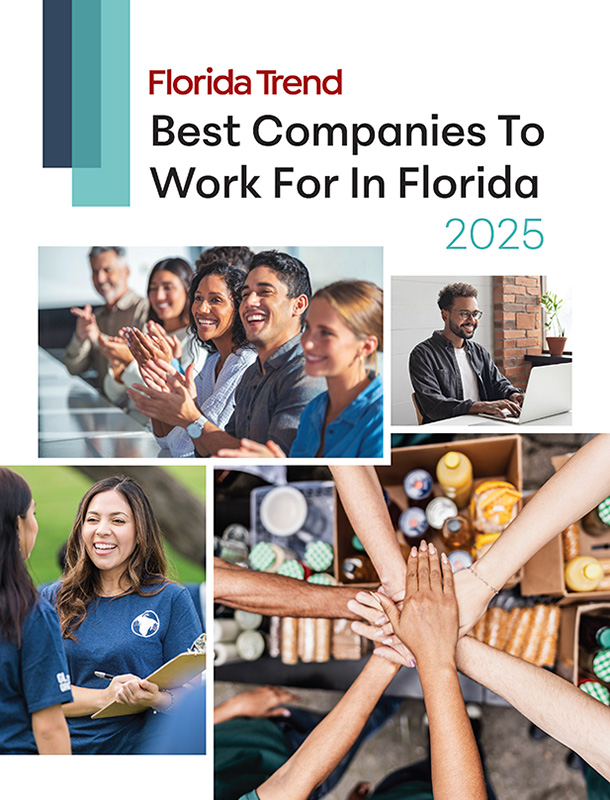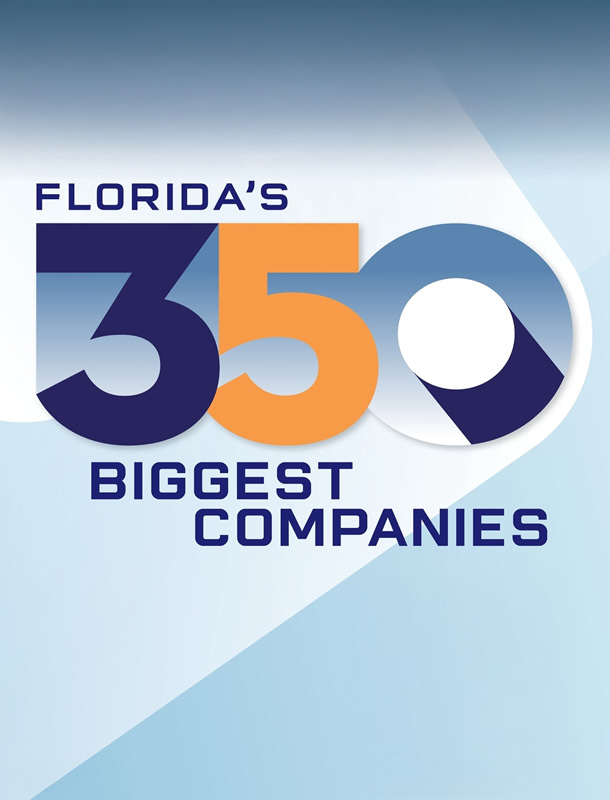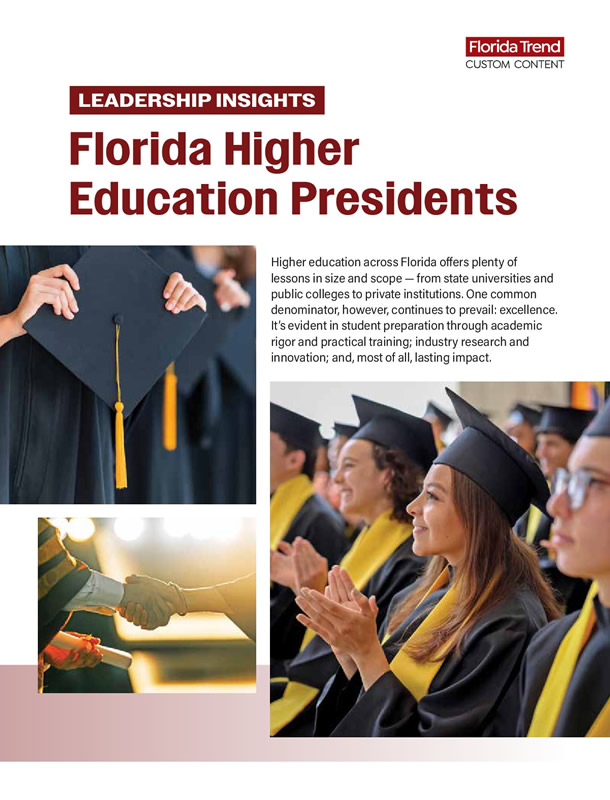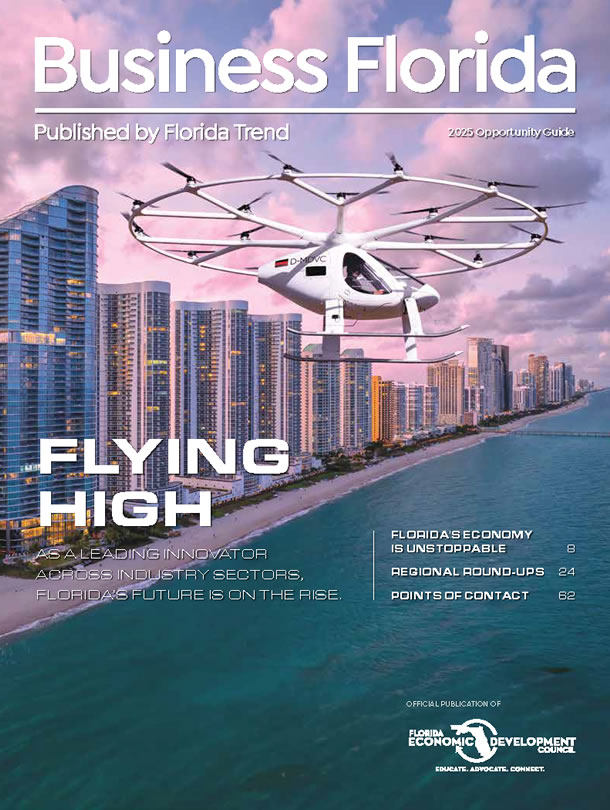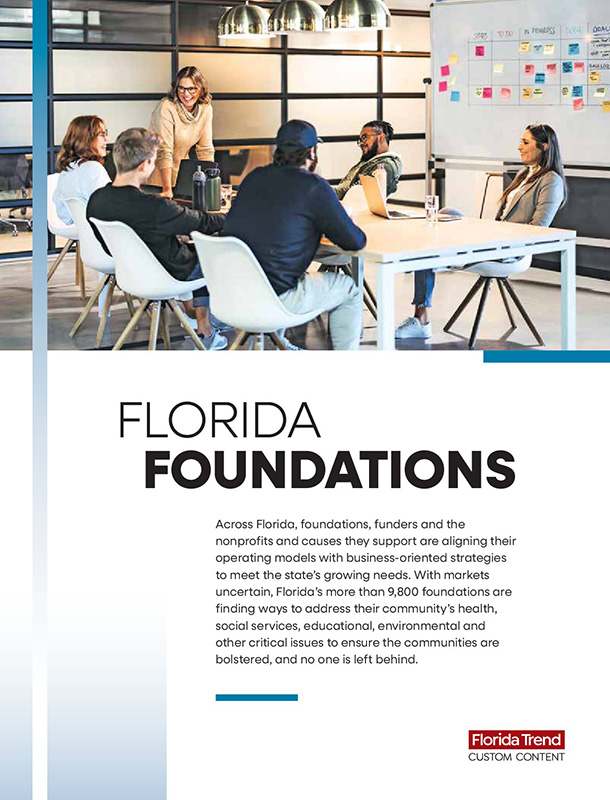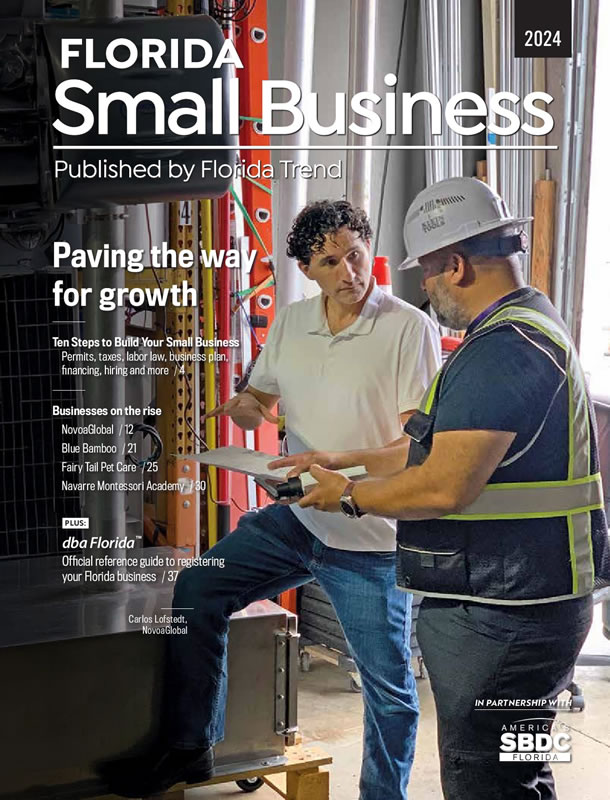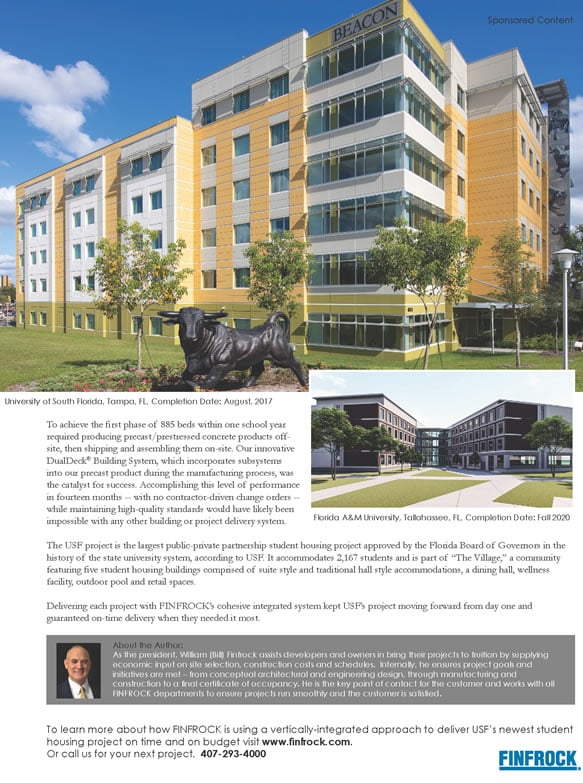INDUSTRY CLUSTER
Aviation, Avionics & Aerospace
» A mile and a half northwest of downtown Melbourne, the Melbourne International Airport has emerged as a thriving hub for aviation manufacturing, supplies and services. Drawn by the region’s skilled workforce — Brevard County boasts 48 engineers per 1,000 workers — and other incentives, Embraer, Brazil’s top aircraft manufacturer, opened an aircraft assembly factory and global customer center at Melbourne International Airport in 2011. The company also is building a 67,000-sq.-ft. Engineering and Technology Center at its Melbourne campus, where it will conduct research and development. The facility is expected to be finished by 2014 and will house 200 employees. MidairUSA, which repairs and refurbishes airplanes, recently expanded its presence in Melbourne by leasing 75,000 square feet of office, production and warehousing space and signed a lease with the Melbourne International Airport Authority for a new 75,000-sq.-ft. hangar to be constructed later this year.
Another newcomer to Melbourne International Airport, AAR Corp. completed the relocation of its airlift and modifications businesses to Melbourne International Airport and opened a new headquarters and administrative office for these businesses in nearby Palm Bay in 2011, creating more than 230 jobs. Other newcomers include Archo Solutions Engineering, a Brazilian-owned aerospace supplier, and Vision Systems, a French aeronautics supplier.
» With 1,500 workers, Rockwell Collins, which produces aviation electronics, is the fourth-largest private employer in the region. SCOTTY Satcom Technologies, an Austrian-owned avionics company specializing in surveillance technology, opened a headquarters at the Space Coast Regional Airport in Titusville last August.
» Two years after NASA shuttered the space shuttle program, unmanned rocket launches continue at Cape Canaveral and Kennedy Space Center. United Launch Alliance, a joint venture of Lockheed Martin and Boeing, regularly launches communications, navigation, missile warning and reconnaissance satellites into orbit for the U.S. military from the Cape and employs more than 600 at Cape Canaveral. ULA also launches many missions for NASA, including the Curiosity Rover in November 2011 and the upcoming Mars mission known as MAVEN, which is scheduled to launch in November from the Cape. SpaceX, a private spaceflight firm, also launches its Falcon 9 rocket from the Cape and has been working with the military to certify the rocket for military launches. The California company already has a $1.6-billion contract with NASA to ferry supplies to the International Space Station. Beyond the launch manifest, the region’s existing infrastructure is also attracting firms hoping to develop the space tourism industry. Rocket Crafters, a 3-year-old Utah-based company that develops innovative rocket propulsion systems it hopes to one day use in suborbital jet airplanes, is moving its operations to Titusville. The relocation will create an estimated 1,400 jobs. XCOR Aerospace, a California-based space tourism company, projects beginning test flights of its suborbital space vehicle out of Mojave, California, later this year or early next, and could begin taking ticketed passengers on suborbital commercial flights “at or near” Kennedy Space Center as early as 2015. The company has been working closely with Space Florida, the state’s aerospace economic development agency, and Kennedy Space Center to establish a base of operations at the Shuttle Landing Facility as well as the manufacturing and assembly facility for its reusable vehicle, the Lynx Mark II. Sierra Nevada Corp.’s Space Systems, a Colorado-based company that is developing an orbital crew vehicle called the Dream Chaser, is also looking at Florida as a possible location for its commercial human spaceflight programs and facilities.
Hot Company
» Northrop Grumman’s decision to open a Manned Aircraft Design Center of Excellence in Melbourne will bring nearly 1,000 jobs to the area. The global security giant is already one of the area’s largest employers, with 1,200 local workers. Northrop Grumman is also planning to build an Aircraft Integration Center of Excellence in St. Augustine.
HOT COMPANIES
» Mainstream Engineering in Rockledge started as a research and development company that solved problems for NASA and DOD related to thermal control and heat pump development. Today, the 27-year-old company founded by Robert Scaringe develops lightweight diesel/JP8-fueled engines, advanced thermal control units, advanced batteries, refrigerators/freezers for shipping containers and a variety of other products for government agencies.
» With about $5 billion in revenue, Melbourne-headquartered Harris Corp. ranked 13th on Washington Technology’s 2013 list of top government technology contractors. Harris employs about 6,500 in Brevard County and is building a $100-million, 450,000-sq.-ft. high-tech engineering center in Palm Bay.
» Craig Technologies has expanded its high-tech manufacturing capabilities with the acquisition of more than 2,000 pieces of specialty NASA space shuttle equipment. The company services all industries, including defense, civil/commercial aviation and transportation.
RESEARCH INSTITUTIONS & TECH TRANSFER
» The Florida Institute of Technology in Melbourne offers more than 180 degree programs, including graduate programs in cybersecurity, and boasts more than 30 research institutes, centers and major laboratories. Funded research at the private institution has more than tripled over the last three years to $94 million. The school recently opened the Florida Tech Research Park at Melbourne International Airport, which houses several high-tech companies.
» Embry-Riddle Aeronautical University in Daytona Beach, the world’s largest, fully accredited university specializing in aviation and aerospace, supplies talent to aviation and aerospace companies and has a growing research component. The school is developing a 90-acre Aerospace Research and Technology Park and has been involved in the NextGen Test Bed program, the federal government’s initiative to transform the nation’s air traffic control system to a satellite-based system.



